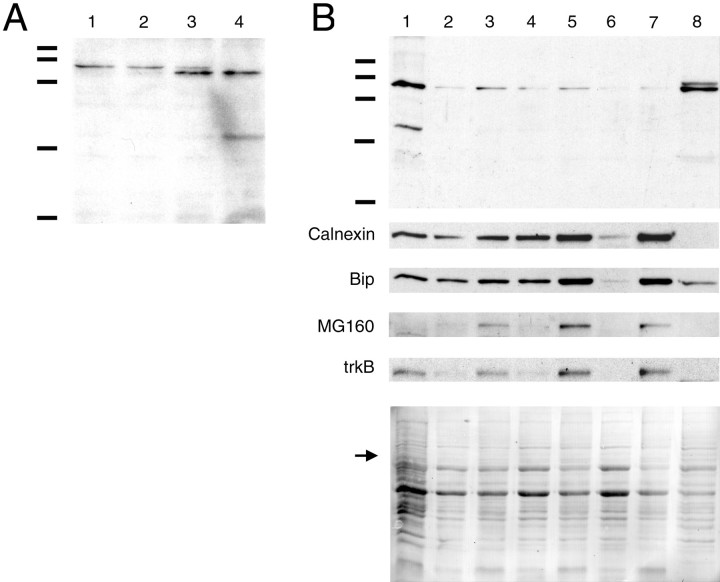Fig. 6.
Postnatal expression and subcellular enrichment of netrin protein. A, Western blot analysis of total spinal cord homogenates illustrates a developmental time course of netrin protein expression in postnatal and adult rat spinal cord. Lane 1 is derived from newborn rat spinal cord;lanes 2–4 are from P7, P14, and adult spinal cord, respectively. A small but distinct shift in the mobility of netrin occurs at approximately P14 (∼80 to ∼75 kDa). PAGE (10%) was used to separate ∼30 μg of total protein loaded per lane.B, After homogenization of adult rat spinal cords, the low-speed spin yields an LSP (lane 1) and an LSS (lane 2). The medium-speed spin of the LSS yields an MSP (lane 3) and an MSS (lane 4). The high-speed spin of MSS yields the HSP (lane 5) containing microsomes and an HSS (lane 6) containing soluble proteins. High-salt extraction of the HSP and high-speed centrifugation yields the HSEP containing stripped microsomes, transmembrane proteins, and the microsomal contents (lane 7) and the HSES containing solubilized membrane-associated proteins (lane 8). PAGE (10%) was used to separate ∼20 μg of total protein loaded perlane. The same nitrocellulose membrane was reprobed multiple times to visualize the different markers shown. Below the immunoreactivity for netrin and each of the markers, the same blot is shown stained with Ponceau S, illustrating that comparable amounts of protein are present in each lane. Thearrow indicates the approximate molecular weight of netrin-1. Molecular weight markers correspond to 116, 97.4, 66.2, 45, and 31 kDa.

